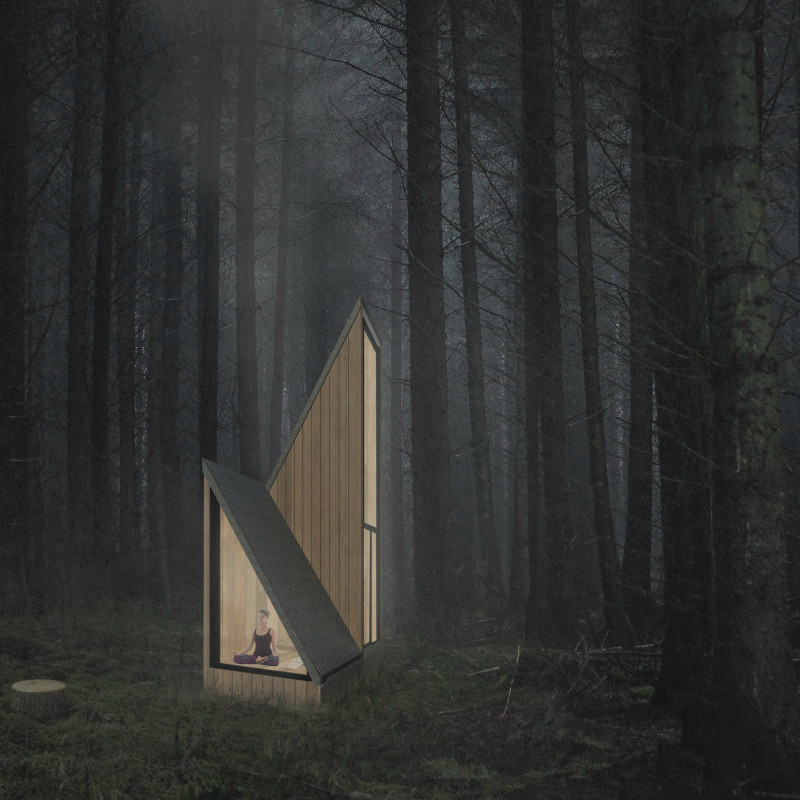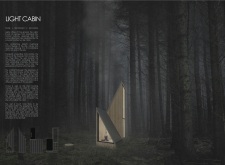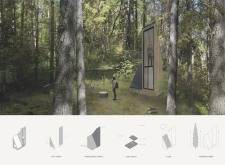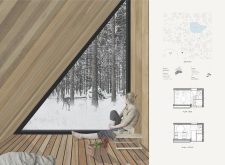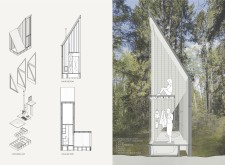5 key facts about this project
The Light Cabin is a residential retreat designed to connect people with nature. Situated in a quiet forest, it serves as a place to escape from everyday life and enjoy the beauty of the surroundings. The design focuses on openness and fluid movement, allowing occupants to immerse themselves in the natural environment through well-thought-out spaces and shapes.
Form and Structure
The cabin features a two-tier design characterized by triangular roofs that rise and fall like the treetops nearby. These shapes not only enhance the building’s appearance but also create a connection with the forest. The roofs provide shelter while allowing for daylight to enter. This combination invites users to experience the relationship between the structure and the natural landscape, making the building feel integrated with its setting.
Spatial Dynamics
Inside, the Light Cabin has an arrangement of spaces that shifts between open and enclosed areas. This design reflects the feeling of walking through a forest, where the experience varies with each step. The thoughtful use of open and closed facades frames views of the lake and forest, drawing attention to the beauty of the surrounding nature. As people move through the cabin, they encounter different perspectives that enhance their appreciation for the environment.
Materiality
Timber is the main material used in the construction of the cabin. This choice supports a commitment to sustainability, allowing the cabin to blend into the forest without causing harm to the ecosystem. The warm qualities of wood create a welcoming environment while emphasizing a connection to the natural world. Using timber also reflects a careful consideration of how materials impact the overall experience.
Design Detail
The cabin’s facades have been designed to create diverse views that encourage exploration. Each window and opening is positioned to frame the changing light and seasons outside, making the experience of the cabin dynamic. Light and shadow can shift throughout the day, influencing how the space feels at different times. The design ultimately fosters a deeper engagement with the landscape, offering a peaceful retreat that coexists with nature.


